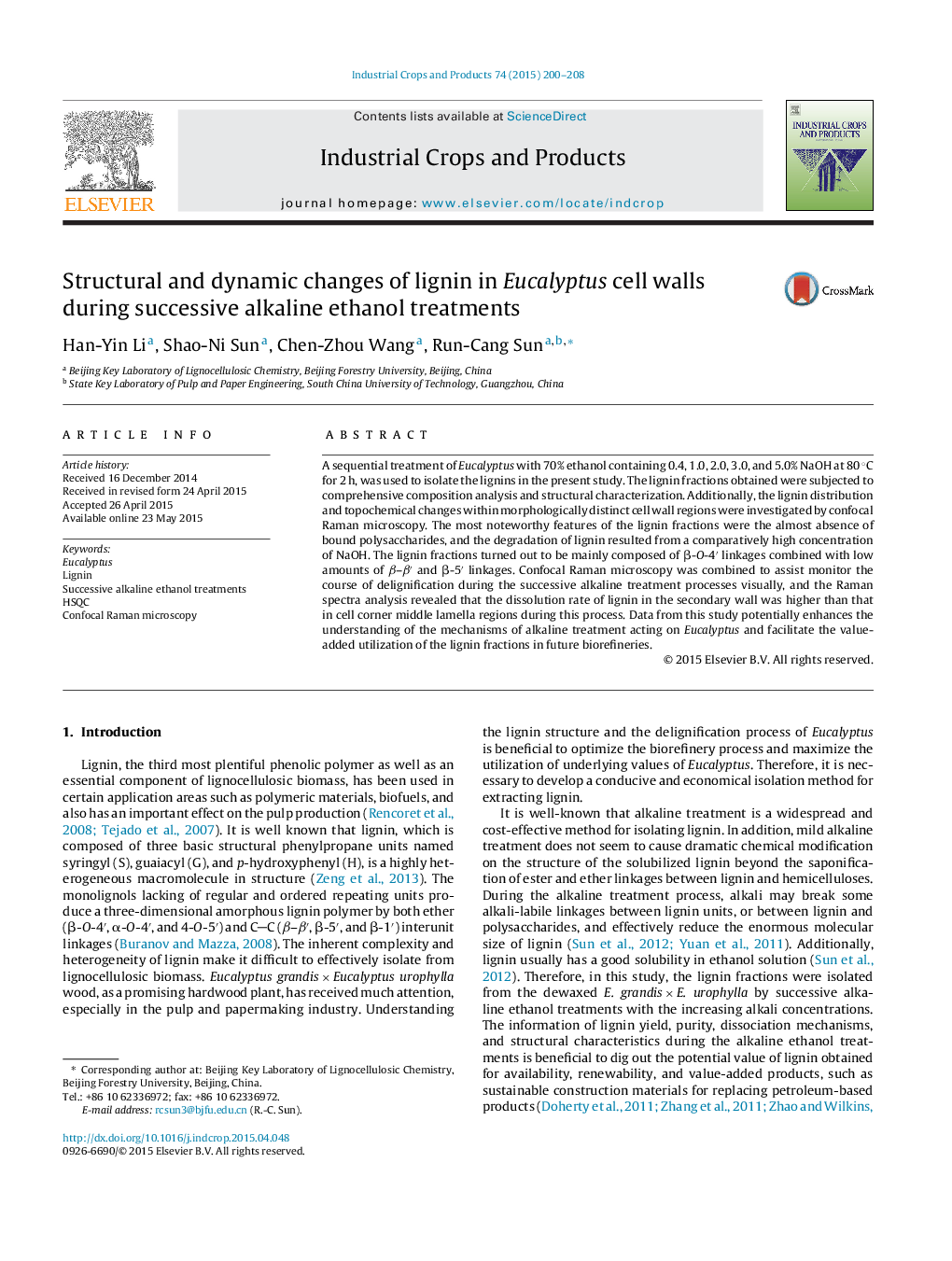| Article ID | Journal | Published Year | Pages | File Type |
|---|---|---|---|---|
| 6375832 | Industrial Crops and Products | 2015 | 9 Pages |
â¢Molecular structure and distribution of lignin were investigated synergistically.â¢Degradation of lignin occurred at a comparatively high concentration of NaOH.â¢The lignin released contained a relatively high content of S units than G units.â¢The spatial distribution changes of lignin were visualized in situ by CRM.â¢The dissolution rate of lignin in the S layers was higher than that in CCML regions.
A sequential treatment of Eucalyptus with 70% ethanol containing 0.4, 1.0, 2.0, 3.0, and 5.0% NaOH at 80 °C for 2 h, was used to isolate the lignins in the present study. The lignin fractions obtained were subjected to comprehensive composition analysis and structural characterization. Additionally, the lignin distribution and topochemical changes within morphologically distinct cell wall regions were investigated by confocal Raman microscopy. The most noteworthy features of the lignin fractions were the almost absence of bound polysaccharides, and the degradation of lignin resulted from a comparatively high concentration of NaOH. The lignin fractions turned out to be mainly composed of β-O-4Ⲡlinkages combined with low amounts of β-βⲠand β-5Ⲡlinkages. Confocal Raman microscopy was combined to assist monitor the course of delignification during the successive alkaline treatment processes visually, and the Raman spectra analysis revealed that the dissolution rate of lignin in the secondary wall was higher than that in cell corner middle lamella regions during this process. Data from this study potentially enhances the understanding of the mechanisms of alkaline treatment acting on Eucalyptus and facilitate the value-added utilization of the lignin fractions in future biorefineries.
